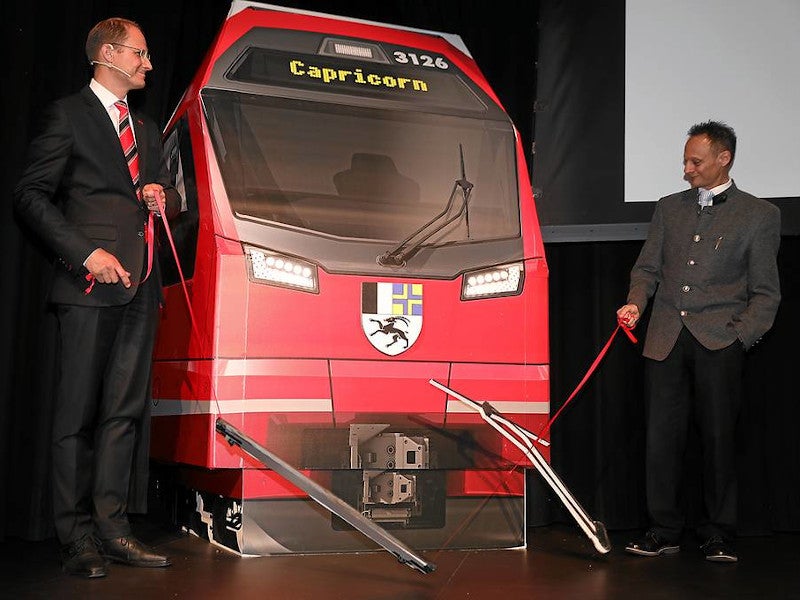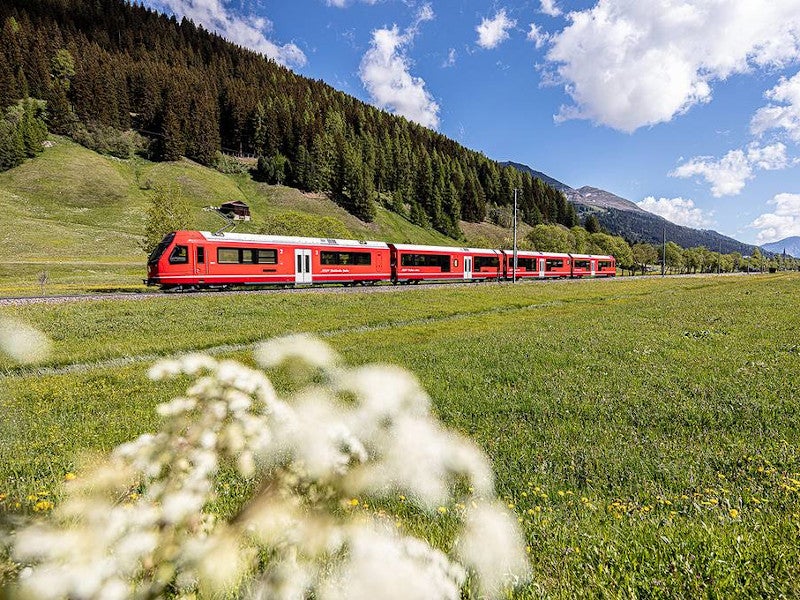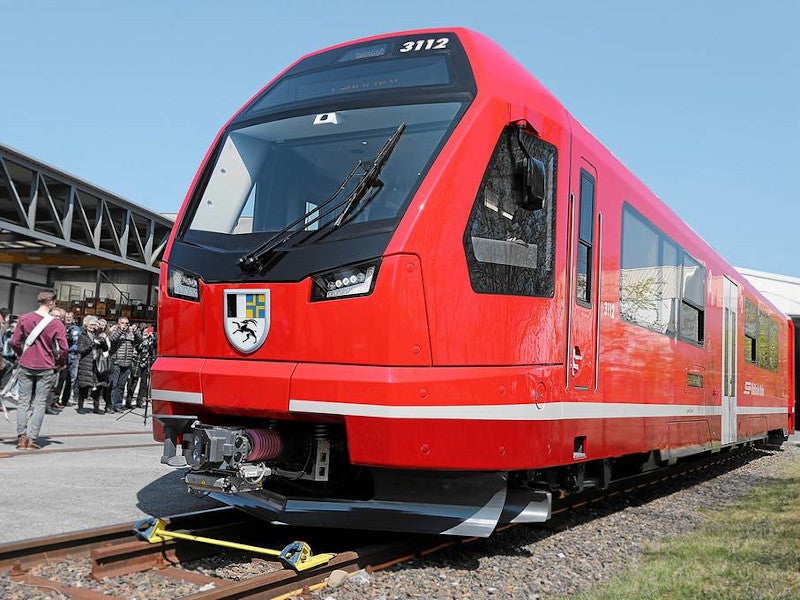Capricorn trains are new multiple-units manufactured by Swiss rolling stock manufacturer Stadler Rail. The multiple-unit was unveiled to the public by Stadler and Swiss rail operator Rhaetian Railway (RhB) in April 2019, marking a significant milestone in the development and subsequent operation of the rail vehicle.
Designed to operate as separable multiple-units, the Capricorn trains will serve Graubunden, the largest canton of Switzerland.
The concept of separable multiple-units will be a first for the region of Graubunden.
The Capricorn trains are expected to deliver a significant upgrade to the RhB’s rolling stock fleet, while increasing its overall productivity.
The vehicles will undergo on-track trials and training before they officially commence operations on the Landquart-Davos-Filisur route from December 2020.
RhB will start operation of separable multi-unit trains between Landquart, Klosters, and Davos-St. Moritz in 2021, once it takes delivery of the required number of Capricorns.
Beginning December 2022, the vehicles will run through the Vereina railway tunnel twice an hour in each direction.
Capricorn trains design and features
Initial operations will involve the use of two multiple units, combined as a single train, for operations between Landquart and Klosters Platz.
The Capricorn multiple-unit train will allow the rail operator to split it into two parts in transit at Klosters Platz.
The two sections of the separable multiple-unit train will then travel to distinct destinations, with one of them running between Klosters Platz and St Moritz, while the second unit operating on the Klosters Platz–Davos route.
The automatic coupling technology will allow the two parts to automatically couple together at Klosters Platz while travelling back in the opposite direction. The single train will continue to run until Landquart.
The concept will allow the half-hour loop to be completed without expensive line extensions on the single-track line from Landquart to Klosters.
The automatic coupling system will also enable smooth operation of the trains.
The trains are designed to operate at a maximum operating speed of 120km/h and will also accommodate the needs of people with reduced mobility. The four-car Capricorn trains will run on the narrow-gauge network in the Graubunden.
Passenger facilities
The 76.44m-long vehicle includes 35 first-class seats, 137 second-class seats, and two spaces for wheelchair users.
The four-car trains will have a passenger seating capacity of 164, with three of the four cars featuring a low-floor entrance to enable easy entry and exit of passengers.
Capricorn is designed to comply with the existing disability equality laws of Switzerland. It will provide greater comfort to passengers during the journey.
Amenities on board the train will include power sockets in all compartments and advanced passenger information system.
Wide doors will enable passengers to board or alight at each stop quickly and comfortably.
The ability to open the windows in the compartments will facilitate views of Graubunden.
The multi-functional compartments will have the capacity to accommodate bikes, skis, athletic gear, baby strollers, and baggage.
Trains will also provide facilities such as toilet for persons with disabilities, and tactile signage for visually challenged individuals, as well as a fire-fighting system.
Capricorn trains orders and deliveries
The Rhaetian Railway (RhB) placed an order with Stadler for the delivery of an additional 20 Capricorn multiple-unit trains in June 2020.
The Sfr173m ($184m) order came after RhB ordered 36 electrical multiple units from Stadler for Sfr361m ($374m) in June 2016. It marked the biggest ever procurement of rolling stock by RhB.











